From the sublime to the ridiculous to the frankly plain unpleasant, Southeast Asia is not short on memorable animal experiences. There's the moment when the baby turtles you release from their hatchery scuttle across the sand on implausibly huge flippers towards the sea and take off for their lifelong journey. And then there's the time an adolescent temple monkey inserts what you think is a finger in your ear, and begins intercourse ...
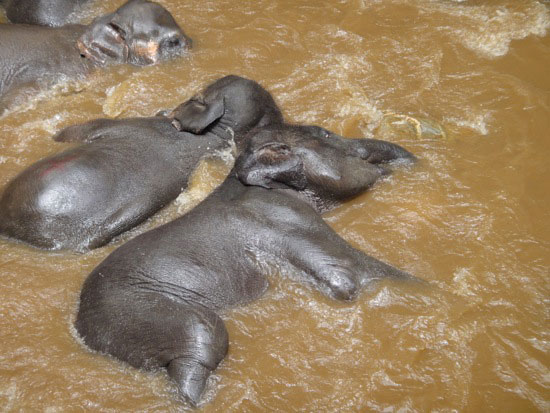
Hardship post.
Now, for those in quest of photo opportunities, the sub-continent provides. You can ride elephants in Laos, Cambodia, Malaysia, Thailand and Indonesia (but should you?); lurch uncomfortably atop a fetid, irritable camel in the celebrated deserts of southern Bali (that's sarcasm, the bit about the desert); cuddle tigers in Thailand (you most definitely shouldn't); wrangle snakes; and get up close and (sometimes) all-too personal with monkeys aplenty.
More obscurely, and for most more rewardingly, you can hear the chirruping song of the world's smallest primate, the tarsier, or the helicopter chug of a hornbill's wings as it wop-wop-wops from tree to tree, in northern Sulawesi, Indonesia, or Bohol in the Philippines.
Watching a family of tarsiers emerge from their home within a strangling fig, enormous eyes gleaming in the twilight, and spring after bugs on their tiny limbs, is extraordinary.
So too are orangutans, the "people of the woods" found only in the forests of Sumatra and Borneo. The mothers swing like hirsute trapeze artists, high through the trees, babies clinging to their fur.
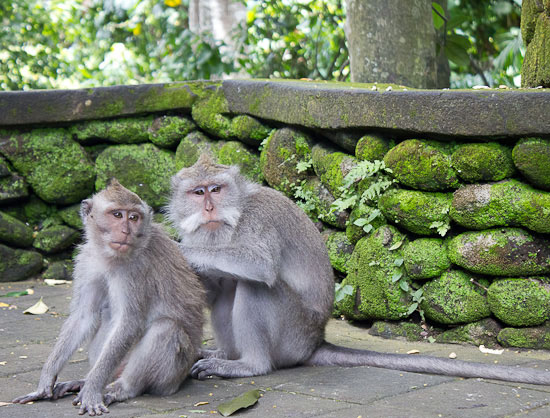
You scratch my back...
In Thailand, Indonesia, Malaysia and the Philippines, you can snorkel or dive with manta rays. These enormous creatures, some five metres across, skim the water like animated opera cloaks, their 'mouths' a turquoise wedge.
The first sight of a dolphin in the wild, leaping from the water, or flying fish, threading the surface of the sea, is something few forget.
Seen those? In Kratie, Cambodia, and Four Thousand Islands, Laos, endangered, freshwater Irrawaddy dolphins play in the vast expanse of the Mekong.
Islands off Borneo and elsewhere bring sea turtles from as far afield as Australia to lay their eggs. The rare and elusive dugong graze on seagrass around several Indonesian and Thai islands.
In Tarakan, Indonesian Borneo, walking fish rise up from the mangrove swamp on their fins, and scuttle from puddle to puddle, while long-nosed, ginger proboscis monkeys play in the trees.
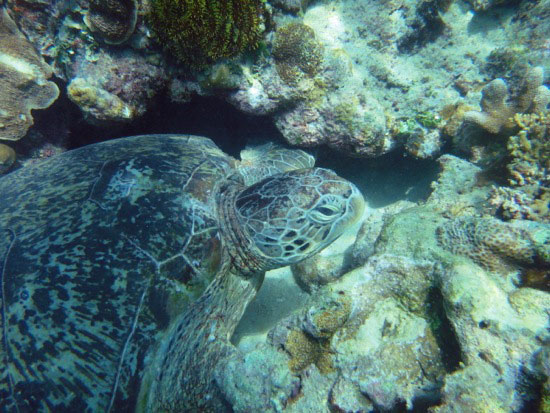
Hanging out on Pulau Derawan.
In Mulu National Park, in Malaysian Borneo, you can watch millions upon millions of bats swarm like bees from the mouth of the vast Deer Cave. (As with anything involving flying creatures, looking up with your mouth open is highly unwise.)
Southeast Asian animal experiences encompass the contradictions of the region. There are moments of Hello Kitty cuteness, easy to achieve and highly photogenic, often concealing conditions that are the animal equivalent of a Bangladeshi factory.
And there are wild experiences, real, dramatic and beautiful - but subject to the vagaries of weather, tides and, well, animal behaviour.
Which to go for? It's a matter of personal choice.
A number of places in Thailand offer the chance to be photographed with tigers of various ages - and [ed: in theory] contribute to their conservation project as you do. And cuddling a tiger cub, or posing, strongman style, with an adult predator, is an offer that some find hard to resist.
It's worth noting that most conservationists consider these businesses to be contributing to the danger of extinction. By sourcing their endangered species from different populations, and mingling these populations, they create cross-breeds that would not, and could not, have existed in the wild, and so can never be reintroduced.
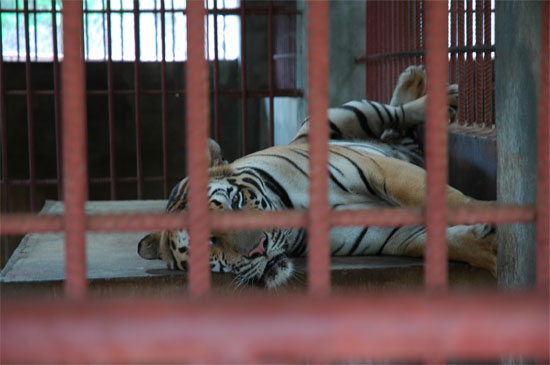
Plaything for patting? No.
It's also worth considering exactly what methods are used to prevent the passing tourist going the way of Roy, from Siegfried & Roy. And why there are so many cubs in proportion to the adult tigers - particularly given the flourishing Chinese black market for tiger body parts...
[ed: Travelfish.org has a very strong position on this: anywhere in Southeast Asia that allows casual visitors to pat or pose for photos with tigers should be avoided. This is especially the case with the Tiger Temple in Kanchanaburi. For more information regarding why the Tiger Temple should be avoided, see here and, more recently, here.]
The decline in legal logging and the mechanisation of illegal logging means that elephants are no longer working animals in most of Asia. But elephant performances, and elephant rides, even in places where elephants were never found in the wild or used as working animals, are a big part of many a tourist experience.
An elephant ride is a once-in-a-lifetime experience for most with good reason. There's the height, for starters. The pointed stick the mahouts use, for seconds. And the swaying, rolling, lurching motion, second only to riding a camel for sheer, seasick discomfort...
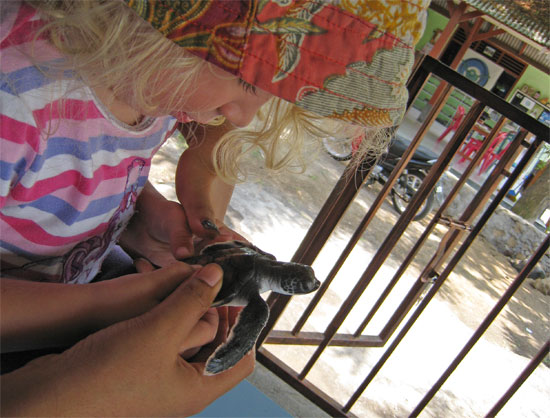
Hands on in the right environment can be memorable & helpful for all.
So too is feeding the monkeys that flourish at and around many Southeast Asian temples, from Angkor Wat to Bali's various monkey forests, fruit and vegetables sold at surrounding stands. Plus, of course, whatever the big males can "liberate" from visitors' bags and pockets.
Cheeky? Thuggish? Or just plain unpleasant?
That depends, I guess, what they do in your ear.